Healthy eating starts with local pimento cheese. Seriously!
With pimento cheese, even picky eaters eat their veggies
– By the Veggie Fairy Team
Pimento cheese may have been invented in New York, but it became a southern staple long ago. South of the Mason-Dixon, everybody’s got a favorite — a cherished family recipe, a potluck tradition, a beloved deli.
Now, it’s true that dairy products do provide lots of nutritional value. And pimento cheese is gluten free! But admit it: With all that cheddar and mayo, you eat pimento cheese for the fabulous creamy comfort it provides, not to achieve excrutiatingly correct nutrition.
Which is what makes Virginia-made Birdie’s Pimento Cheese such a great secret weapon for getting picky eaters to eat their veggies. You can transform veggies into pimento cheese delivery vehicles by dipping it up with sticks of raw carrots or celery, wrapping it in collard greens, and adding it to tomato sandwiches. It’s quick, it’s easy, it’s addictively delicious, and on a busy day it’s a lot better for you and your family than fast-food take-out.
We’ve got some how-to’s on that at the end of this post. Because figuring out how to eat healthy meals even when you’re pressed for time can be a real challenge.
Bad news about kids’ restaurant meals
It’s especially hard to find convenient kids’ meals that are also healthy. Ninety-seven percent of the children’s restaurant meals studied by the Center for Science in the Public Interest did not meet expert nutrition standards for children’s meals. Even at home, less than one-fourth of family dinners include a full serving of vegetables, according to a recent survey by Birds Eye.
Good news about convenient home-cooked meals
Yes, they CAN be convenient! That’s why we’re including prepared foods like Birdie’s Pimento Cheese alongside the vegetables and fruits in our home-delivered farmers market — to equip you with the tasty tools you need to eat healthy, even when you’re in a hurry or faced with a picky eater.
Birdie’s story
Birdie’s is our fave because it’s locally made, its ingredients are sourced locally whenever possible, and we’ve got it in five — count ’em FIVE — fun flavors: Classic, Cream Cheese & Black Pepper, Garlic Parmesan, Smoked Gouda with Roasted Red Pepper, and Jalapeno.
Birdie’s is co-owned by Robin and Glenn, affectionately known as Birdie and Bubba. Robin grew up in North Carolina, and there was always some pimento cheese in the fridge. Since it was easier to eat a spoonful of pimento cheese than to make a sandwich, she chose it for her go-to after school snack. She didn’t think much about it, other than sneaking a few bites between playing outside and maybe doing some homework. (Let that be a lesson to all you parents out there — always stash those celery sticks next to the tub of pimento cheese to encourage sneaky kiddos to use veggies instead of spoons!)
So Robin grew up, got married, and she and Glenn ran their own printing business. When Robin’s niece got pregnant, everybody in the family was picking out their grandma name or family nickname.
“I think my niece thought I was going to feel left out and she pondered what to call me,” Robin recalls. “You have to be careful letting others nickname you, you could end up as Fruit Loops. So I jumped in with an offer: With a bird as my first name, I thought how about Birdie!”
After that, Robin was once asked if her pimento cheese recipe was hers or her Aunt Birdie’s. She said, “I’m Aunt Birdie!” It was only in July of 2014, as Robin was about to turn 50, that she saw an opportunity to make and sell her own pimento cheese. “My great niece thinks it’s very fine that she’s the catalyst for the name of our pimento cheese. She’s a super fan!”
It happened like this. A revitalization grant brought a farmers market to the Allen’s home of South Hill, Virginia. Eventually, Glenn caught the market bug and figured he’d try his hand at growing and selling cabbages.
“He planted about 24 cabbages in our little garden,” Robin remembers. “As the cabbages started to grow, like good little cabbages do, our hound dog, Day-z, would nip the tender heads right off. Glenn was beside himself. Every afternoon, there was another dead cabbage in the driveway. I suggested I could make pimento cheese.”
So Robin and Glenn came up with a plan to sell three flavors of pimento cheese at the market — just for one day, just to see what it was like.
Turns out, they loved everything about it. The town of South Hill cleared the way for Robin and Glenn to get their pimento cheese inspected and their business established, and after that first day — making new friends over pimento cheese, feeling the thrill of the sale, and selling out all 30 tubs of cheese they had in stock — Robin and Glenn launched the next phase of their lives together. They sold the printing business and started making pimento cheese full-time.
Why we love pimento cheese
Robin, a.k.a. Birdie, explains what she loves about it all:
“When I would take my pimento cheese to people’s parties, people would say, ‘Oh, well, I put a little onion in mine,’ and that’s when I realized that people are really doing things with it. That’s why we have five flavors. Familiar and exotic at the same time, we’re wildly curious about this Southern tradition. Store-brand pimento cheese has become blander, a please-all attempt that has just left it flavorless. People will taste ours and then they start talking about their aunt’s recipe or the way their mom would make it. That’s one of the beautiful things we’ve experienced with having this business — we get to share everybody’s memories.”
We veggie fairies love that about it, too… almost as much as we just love eating it. It’s so fresh! You’ll find Birdie’s Pimento Cheese in the market’s Extras section.
How to cook with pimento cheese
Watch Robin demonstrate how to make chicken breasts and collards stuffed with Birdie’s Pimento Cheese. To max out the flavor and nutrients, use the healthiest possible ingredients: local pasture-raised chicken and bacon and local sustainably grown collards. They’re available in our home-delivered farmers market. Serve it up with a salad of veggies and/or fruits and you’ve got a complete meal full of fresh nutrition, especially if you double up on the collards.
Watch Robin demo how to make grilled pimento cheese and tomato sandwiches. Be sure to use fresh local tomatoes and fresh-baked local bread. She’s also got other suggestions like sandwiching the pimento cheese between cucumber slices.
Visit Birdie’s Pimento Cheese on Facebook or on her website.
ABOUT SEASONAL ROOTS
Since 2011, Seasonal Roots’ online farmers market has connected Virginia families with local family farmers who use sustainable, humane practices. Our veggie fairies – mostly moms who believe in living better through scrumptious, healthy eating, being kind to animals, protecting the environment, and spreading joy – home-deliver freshly harvested produce, pastured eggs, grassfed dairy and meat, plus artisan fare. We empower our members to eat better and live better with more nutritious, flavorful food that’s good for us and good for the planet. More info at seasonalroots.com.
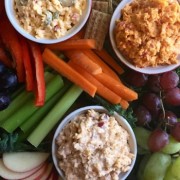






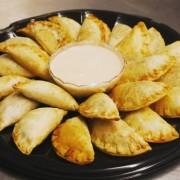










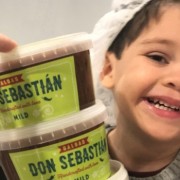







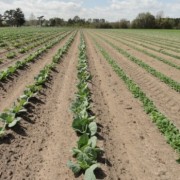
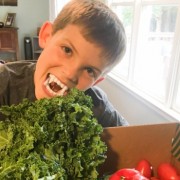
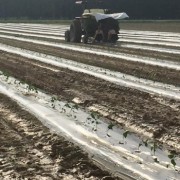
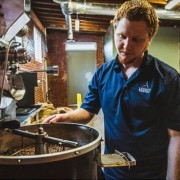








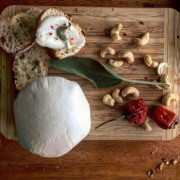







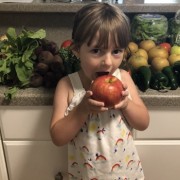
 – By Morgan P, veggie fairy & neighborhood Market Manager in Virginia Beach
– By Morgan P, veggie fairy & neighborhood Market Manager in Virginia Beach